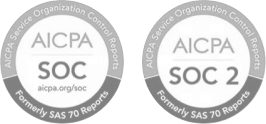Involuntary Deductions
Article Navigation
Involuntary deductions are mandatory withholdings from an employee’s wages that occur without the employee’s consent. These deductions are typically imposed by legal or regulatory authorities and are used to satisfy financial obligations such as unpaid taxes, child support, defaulted student loans, bankruptcy orders, or court judgments. Unlike voluntary deductions, which employees choose to participate in (e.g., health insurance or retirement savings plans), involuntary deductions are legally enforceable and non-negotiable.
Understanding Involuntary Deductions in Payroll
In a payroll context, involuntary deductions refer to any mandatory withholding from an employee’s paycheck due to an external legal obligation. Employers play a critical role in processing and remitting these deductions accurately and promptly. Failure to comply with such orders can result in serious legal consequences for the employer, including fines or liability for the employee’s full debt.
These deductions can originate from federal or state courts, administrative agencies, or other governmental bodies. Employers must adhere strictly to the details provided in the garnishment or levy notice, ensuring that deductions are calculated correctly and paid to the appropriate recipient within the designated timeframe.
Types of Involuntary Payroll Deductions
- Wage Garnishment: Wage garnishment is a legal procedure in which a portion of an employee’s earnings is withheld by the employer to repay a debt. This is the most common type of involuntary deduction. The garnished amount is then sent directly to the creditor or court-designated agency. Common causes include credit card debt, medical bills, and court fines. Wage garnishments often require a court order unless otherwise specified by statute (such as for federal student loans).
- Child Support Withholding: Federal and state laws require employers to deduct child support payments from the wages of employees who are behind on court-ordered child support. These deductions are prioritized above most other wage garnishments and are enforced through income withholding orders issued by family courts or child support enforcement agencies.
- Federal Tax Levies: If an employee owes back taxes, the IRS can issue a federal tax levy instructing the employer to withhold a specific portion of the employee’s pay. The levy remains in effect until the debt is paid in full or the IRS releases the levy. Employers must follow strict guidelines in calculating exempt income and remitting the garnished amount.
- State Tax Garnishments: State revenue agencies may also garnish wages to collect unpaid state taxes. Like federal tax levies, these require employers to withhold earnings and send payments directly to the state’s department of revenue or taxation.
Student Loan Garnishment
Federal law permits the U.S. Department of Education to garnish wages administratively (without a court order) for employees who have defaulted on federally guaranteed student loans. Employers must comply upon receiving a garnishment notice.
Bankruptcy Orders
Employees under Chapter 13 bankruptcy repayment plans may have their wages garnished as part of a structured debt repayment agreement. These deductions are court-mandated and must be handled according to the bankruptcy trustee’s instructions.
Court-Ordered Payments
Courts may issue wage garnishment orders to satisfy a wide range of debts, such as personal injury settlements, civil damages, or unpaid legal fines. These garnishments are legally binding and must be honored by employers.
Legal Framework and Compliance
Federal Law: Consumer Credit Protection Act (CCPA): The CCPA sets limits on how much of an employee’s disposable income can be garnished:
- Up to 25% of disposable earnings
- Or the amount by which earnings exceed 30 times the federal minimum wage
The lesser of these two figures is applied. Disposable income refers to wages left after mandatory taxes and deductions, not gross earnings.
State and Local Laws
Each state may impose its own limits and conditions regarding involuntary deductions. Some states offer greater protection to employees by capping the garnishment amount at lower thresholds than federal law allows. In some jurisdictions, wage garnishments for consumer debts are either prohibited or highly restricted. Employers operating across multiple states must be aware of and comply with all applicable state-specific requirements.
Employer Responsibilities
Employers have several obligations when it comes to managing involuntary deductions:
- Accurately interpret and apply garnishment orders
- Calculate deductions based on disposable income
- Remit payments within legally defined timelines (often within 15 days after payroll)
- Notify employees of garnishments and provide regular statements
- Maintain detailed records of garnishments and communications
Employers are also required to notify the issuing authority if an employee is terminated or no longer receives wages.
Voluntary vs. Involuntary Deductions
Voluntary Deductions: These are elected by the employee and include contributions to benefits such as:
- Health insurance premiums
- Dental and vision plans
- Retirement plans (e.g., 401(k))
- Life insurance
- Charitable contributions
Employees can opt in or out of these deductions, typically by submitting written authorization.
Involuntary Deductions: These are imposed without employee consent and may only be modified through legal channels, such as appealing to the court or reaching a settlement with the creditor. Employees have little control over the amount or duration unless they resolve the underlying debt.
Challenges in Managing Involuntary Deductions
Managing involuntary deductions presents several administrative and compliance challenges:
- Multiple Orders: Employees may be subject to several garnishments simultaneously, requiring employers to apply a specific order of precedence.
- Changing Circumstances: If an employee’s pay or employment status changes, garnishment calculations must be updated.
- Ongoing Legal Compliance: Employers must keep up with federal and state garnishment laws, as well as court precedents.
- Data Accuracy and Security: Accurate documentation and secure handling of personal and financial data are critical.
- Employee Sensitivity: These deductions can be emotionally charged, and clear, respectful communication is essential.
Best Practices for Employers
- Use payroll software with garnishment compliance features
- Train HR and payroll teams on garnishment procedures
- Automate notifications and payment schedules when possible
- Create a standard process for handling garnishment orders
- Document all steps taken and communications with affected employees
Conclusion
Involuntary deductions are a critical aspect of payroll that employers must navigate carefully. Understanding the laws, executing orders accurately, and maintaining transparency with employees ensures compliance while minimizing friction. With the right systems and knowledge in place, employers can efficiently manage these complex legal requirements and maintain positive employee relationships.































 Back
Back